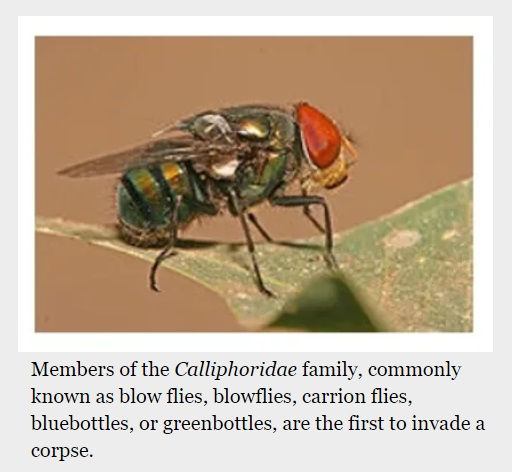A Lesson In Forensic Entomology
- Sep 12, 2023
- 2 min read

Forensic entomology is the study of the insects associated with a human corpse to determine the time elapsed since death. In the last 20 years, forensic entomology has become common in police investigations. Most cases that involve a forensic entomologist are 72 or more hours old because after three days, insect evidence is often the most accurate and sometimes the only method to determine the time of death. Flying insect evidence is reliable because they can detect a dead body from 8 to 10 miles away, are attracted to it immediately after death, and can reach it within a few hours.
In “The Dagger,” one of the stories in The Deadliest Deceptions, Phoebe takes Miriam’s place to work with Professor Jason and investigate the death of a retired gladiator. She tells us of her experience:
Covering my nose with the lavender-scented sachet I keep in my bosom, I followed the funnel of light the soldier’s lantern had painted on the pitted floorboards. When the professor pushed open the door and picked up the lantern, its light rushed in and painted Ursus’s room with a sickly yellow skin. With the whiff of death brushing my face, I saw that a mass of blowflies in their metallic green armor was feasting on the gash that severed Ursus’s throat. I stayed a few paces away to take note of the corpse in case I had to vouch for its appearance, but in simple terms, it looked like a walrus stuffed with sawdust.
Forensic entomology was not available to Phoebe or the professor, but it likely would not have helped them anyway. You surely would have done better interpreting the evidence. To prove me right, click here.




















Comments